Lance Cpls. Cody Nickol and Jesse Seigel checked that the two invisible “terrorists” were dead. Without speaking, they then knew they’d take the squad’s lead in clearing what was on the other side of the doorway behind them in one of the gloomy rooms of the bunker-like Marine Corps Security Force Regiment “schoolhouse.”
They took positions on either side of the door. They couldn’t see any hinges, so they knew the door would push open. When a nod signaled both were ready, Seigel pushed.
Opening doors to confront an unknown threat is their job. The two are members of a Yorktown-based Marine Corps unit that stands ready to take back U.S. embassies or consulates if terrorists seize them. The regiment also provides security for nuclear weapons and protects other vital national facilities.
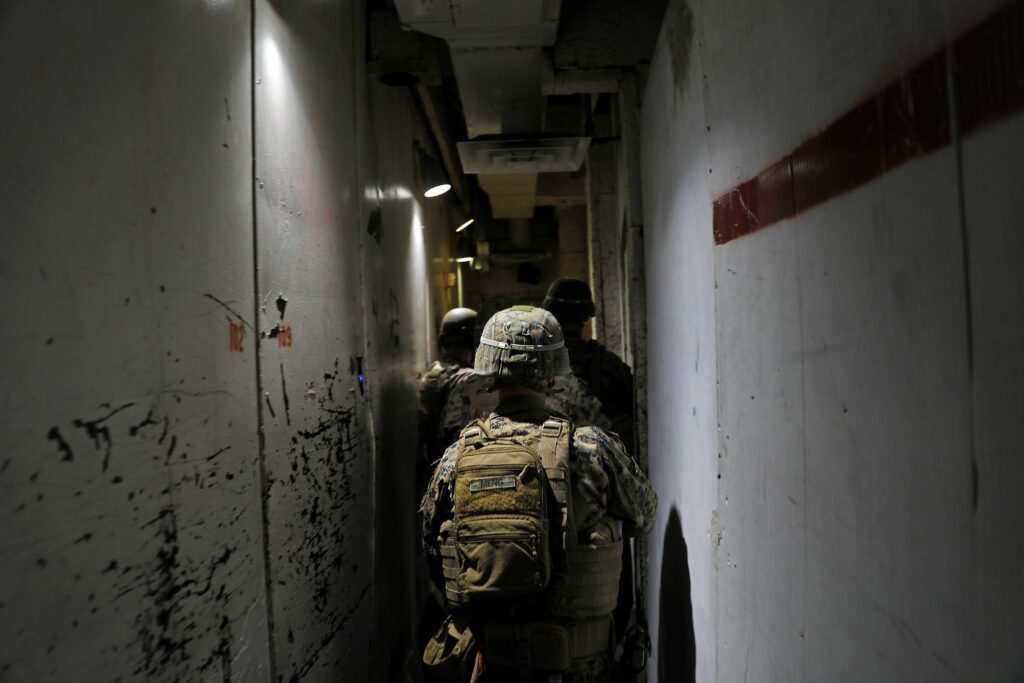
To do that work takes a talent for a quick read of a situation, plenty of split-second decision-making and skill at reading the body language and terse words of each Marine in a tight-knit squad.
It took just a few seconds for Seigel and Nickol to do the “pie” — shifting position slightly, though staying behind the wall on either side of the door — in order to look into the space in front of them.
“Ready,” said Seigel. “Move,” said Nickol.
Seigel, the most exposed by the opened door, stepped forward. “Hallway left,” he called. Nickol stepped out behind him. “Hallway left,” the other Marines in the six-man squad passed down the line.
“Closed door. L-shape right,” Seigel called. “Support.”
That meant another room to check and behind it, an open space leading off to the right.
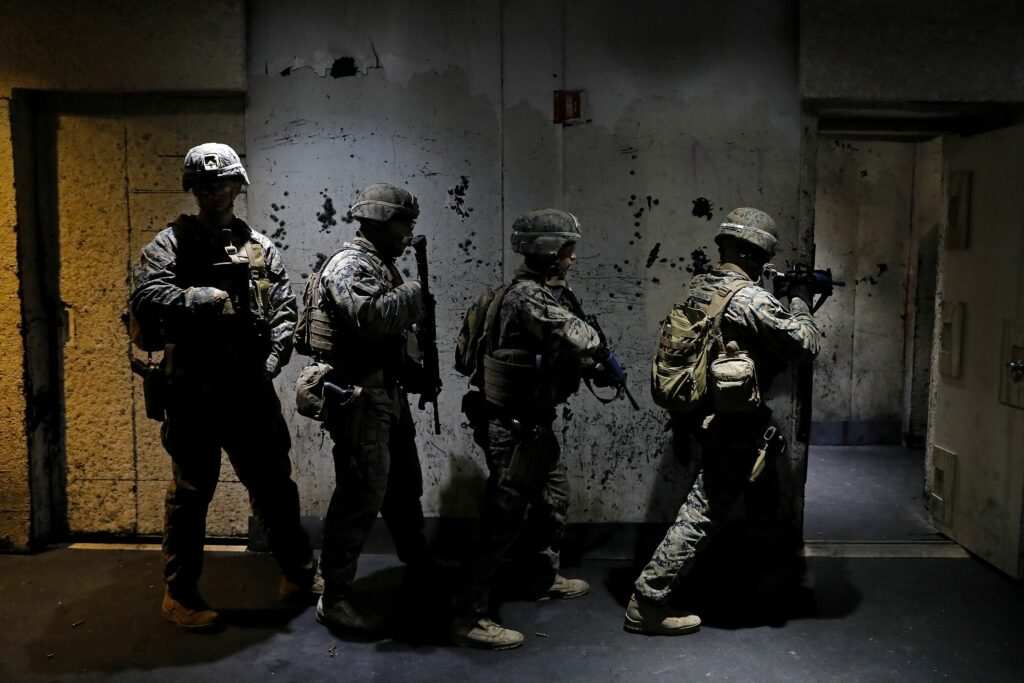
Lance Cpl. Michael Griffiths stepped into the hall behind his teammates. Seigel started moving forward.
“I’ve got point,” Griffiths said. Seigel nodded.
That exchange communicated this: “I’ve got this job, clearing the L-shape, look for the next,” Seigel explained later, adding: “You’re always looking for the next job.”
The exchange, with no other elaboration, also meant this: Griffiths would ease along the left-hand wall of the hallway with Seigel keeping pace to his right, putting his body between Griffiths and the closed door. It’s called “providing plate,” meaning Seigel’s body armor and his body provided protection for Griffiths from any shots through the closed door as Griffiths moved ahead to look for danger around the corner.
For Griffiths, the decision to take the point was immediate. His read of the hallway was that the first task was to deal with any threat hiding around that open corner and that Seigel was ready to provide plate.
And when with those three little words, Griffiths said that was the plan, Seigel nodded.
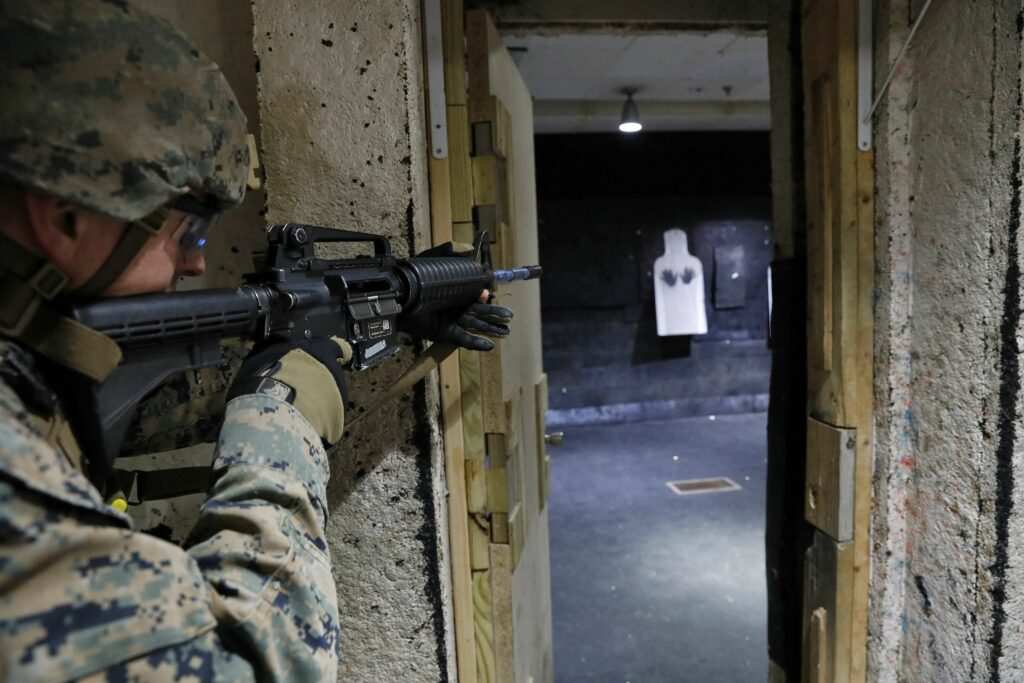
It could just as easily been him or Nickol who took the point — Nickol in fact would do just that in the next run-through, that time with live ammunition.
Griffiths saw there was no threat once he reached the open space, did his pie and then stepped into the short dead-end space.
The next time, when Nickol was at point, the schoolhouse instructors had put up a human-shaped paper target, with a black silhouette of a pistol at the chest.
Nickol fired. But he didn’t feel the rifle pull forward after the recoil, the way the bolt would normally push it as it moved forward for the next round.
He knew that meant he was out of ammunition, and immediately pulled his pistol and fired his two shots to the chest and two to the “T-box” — the triangle defined by a person’s two eyes and nose.
The regiment’s goal is for its Marines to fire within 2.7 seconds of spotting a threat. If a Marine’s rifle jams, the aim is to have pistol out and fatal shots fired within three more seconds.
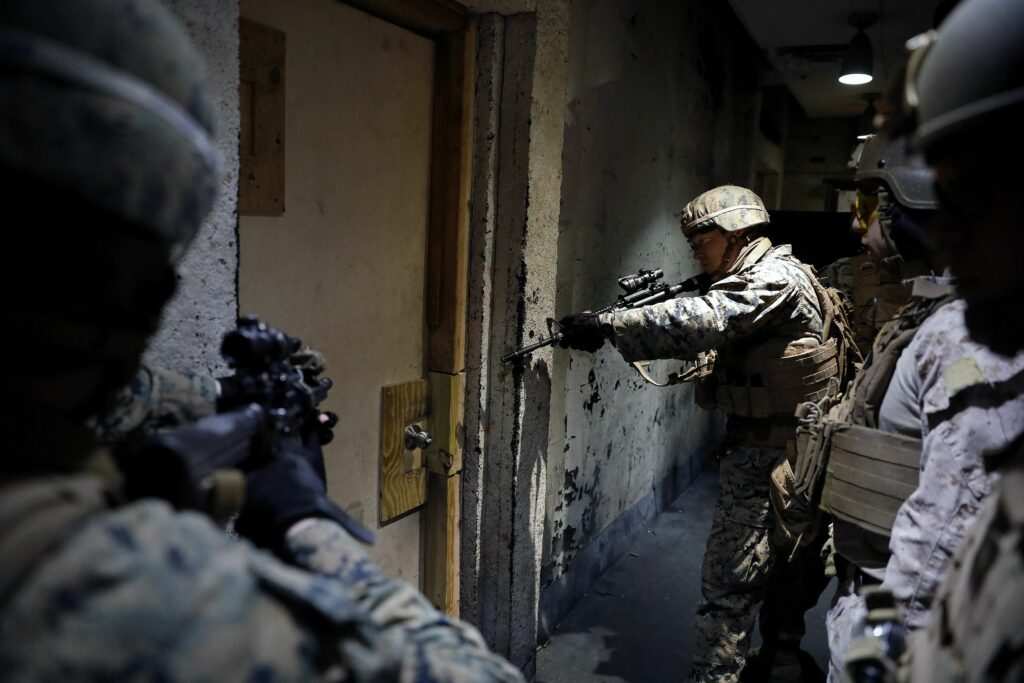
The squads training this week were a mix of experienced security force Marines and others only recently arrived to the unit. The schoolhouse is a kind of advanced course, a chance to build muscle memory — whether it’s understanding the way a rifle recoils and pulls forward or a teammate’s nod or the best way to use a wall for protection as you pie the space ahead.
A glance at the targets from that day’s live-fire sessions and at the torn-up cork-like target backings that the Marines had been using for the past 10 days suggested that marksmanship muscle memory is there. A target with the silhouettes of two hands in a spread-finger gesture of surrender had no bullet holes in it.
Nickol didn’t miss this time either.
“I have a dead check,” he called, as two Marines fired at the target in the the room behind the closed door — the same room he and Seigel had cleared earlier that afternoon, when Griffiths took the point.
“Clear … Find it, shake it, break it,” one of the two in that room called out, lighting up the chemlight — a Marine Corps version of a glow stick used to indicate that the room was safe and as a guide through unfamiliar buildings, just in case the squad later had to backtrack.
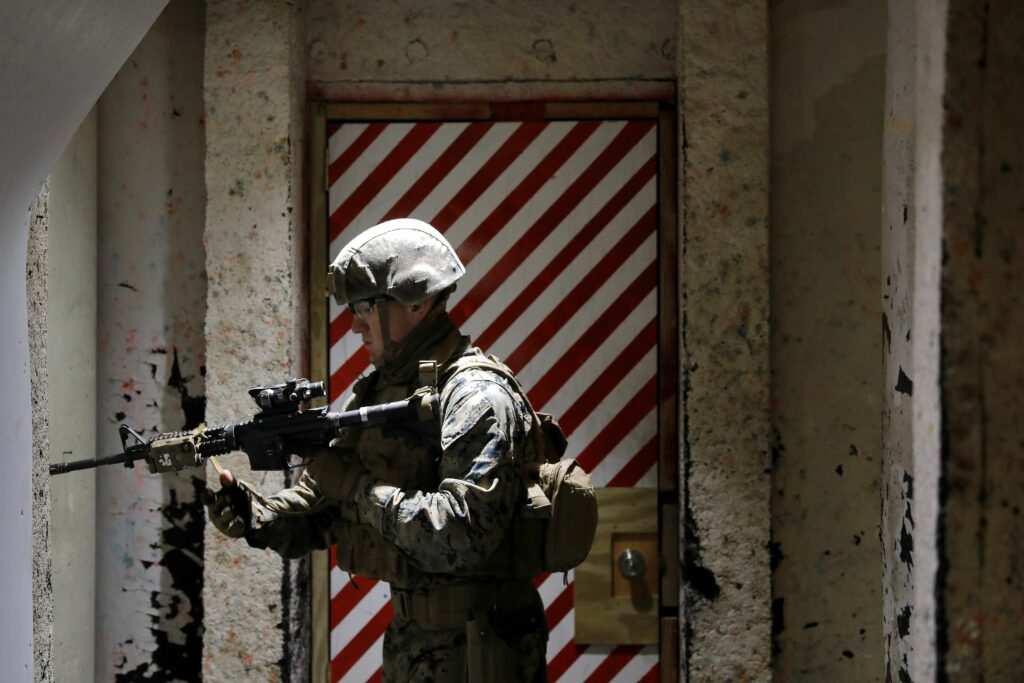
A fourth Marine stepped along the hallway, meanwhile, to cover Nickol for the next thing he would have to do if the exercise had been for real — check that the person he shot was indeed dead.
“Objective secured,” Nickol called. And the squad turned around to pick up all the shell casings.
___
(c) 2021 the Daily Press
Distributed by Tribune Content Agency, LLC.



